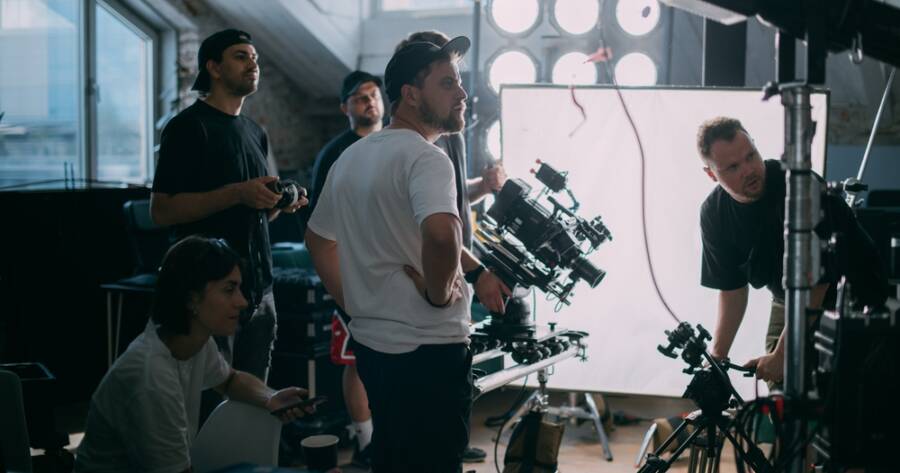The film industry, a realm of creativity and storytelling, offers myriad opportunities for those passionate about visual arts. Among the many roles in this field, cinematography stands out as one of the most integral yet intricate components of filmmaking. For aspiring cinematographers, navigating the labyrinth of job opportunities can seem daunting. Explore the diverse career paths within cinematography, and unlock insight and guidance for those eager to illuminate their professional journey in this dynamic industry.
Understanding the Role of a Cinematographer
At the heart of every film, the cinematographer plays a pivotal role, responsible for crafting the visual narrative that breathes life into the director’s vision. While many people appreciate the artistic result, fewer understand the extensive skills and responsibilities entailed in this position. Generally, cinematographers collaborate closely with directors and other creative leaders to determine how best to capture the story visually.
This collaboration often requires a deep understanding of lighting, composition, camera equipment, and film techniques. Furthermore, as technology advances, cinematographers may need to keep up with the latest trends, such as drone cinematography or CGI-enhanced film. Conditions in the film industry may require a continuous learning process, pushing cinematographers to refine their skills and adapt to new technologies regularly.
The Path to Becoming a Cinematographer
Entering the field of cinematography typically involves a blend of education, hands-on experience, and networking. Many aspiring cinematographers begin their journey in film school, where they can gain a foundational understanding of filmmaking and cinematography. These programs could potentially offer students access to industry professionals and opportunities to work on student film projects, allowing them to practice their craft in a controlled environment.
However, formal education is not the only path. Some professionals may find that real-world experience, such as working on independent films, music videos, or television productions, can also be an effective way to build skills and build a portfolio. Networking, attending film festivals, and engaging in film communities can provide valuable connections that may lead to job opportunities in the future.
Exploring Cinematography Job Roles
Cinematography encompasses more than just the role of Director of Photography (DoP). The film industry offers various positions under this umbrella, each contributing uniquely to the visual storytelling process.
Camera Operator
Camera operators, often working under the guidance of the DoP, are directly responsible for shooting the film. They ensure that camera movements and framing align with the artistic intent, demanding precision and dexterity. Several career paths might begin as a camera assistant before advancing to an operator position.
Gaffer and Grip Roles
Gaffers and grips are essential to the cinematographic process, focusing primarily on lighting and rigging. Gaffers oversee the lighting plan, working to achieve the right mood and exposure, while grips handle the physical and mechanical aspects of the shoot, such as setting up and moving equipment. These roles require a technical understanding of lighting dynamics and collaboration with the DoP to enhance the film’s visual quality.
Steadicam and Drone Operators
With technological advancements, the demand for niche operators, such as Steadicam and drone operators, is increasing. These specialists provide unique perspectives and capabilities, capturing shots that add dramatic depth and dimension to films. Steadicam operators require endurance and proficiency in maneuvering equipment smoothly, whereas drone operators must adhere to strict regulations and exhibit skill in aerial cinematography.
Building a Portfolio and Gaining Experience
Developing a strong portfolio is crucial for anyone seeking to advance in cinematography. While aspiring cinematographers may begin by contributing to small or independent projects, these experiences can be pivotal in showcasing their unique style and abilities. Building a reel with a range of work, from different genres and formats, may display versatility to potential employers.
Internships and entry-level positions can offer hands-on experience and insights into the industry’s workflow. Networking with mentors and peers can also serve as a means to exchange knowledge and discover further opportunities. Proactively seeking feedback and being open to learning from each project can refine one’s craft and potentially lead to more significant roles.
Challenges and Rewards in Cinematography
Cinematography, like many creative professions, presents both rewarding and challenging aspects. The demands of the role can often involve long hours and intensive work environments, requiring resilience and passion. Challenges might include meeting tight deadlines, managing large teams, and constant problem-solving during shoots.
However, the creative fulfillment and contribution to a film’s success can offer immense satisfaction. For many, the joy of seeing a completed project, knowing they played a crucial role in its visual storytelling, is highly rewarding. Those equipped with creativity, dedication, and a willingness to continuously evolve have the potential to thrive and grow within this dynamic field.
Learn More Today!
The journey into the realm of cinematography is diverse and filled with opportunities for those willing to explore its depths. Although it is not without its challenges, the prospects it offers can lead to a fulfilling and dynamic career in the film industry.
By understanding the various roles and determining their path, aspiring cinematographers can carve out a niche in this field that aligns with their artistic vision and professional goals. With the right combination of education, experience, and networking, the canvas of the film industry is wide open for creativity to flourish.

